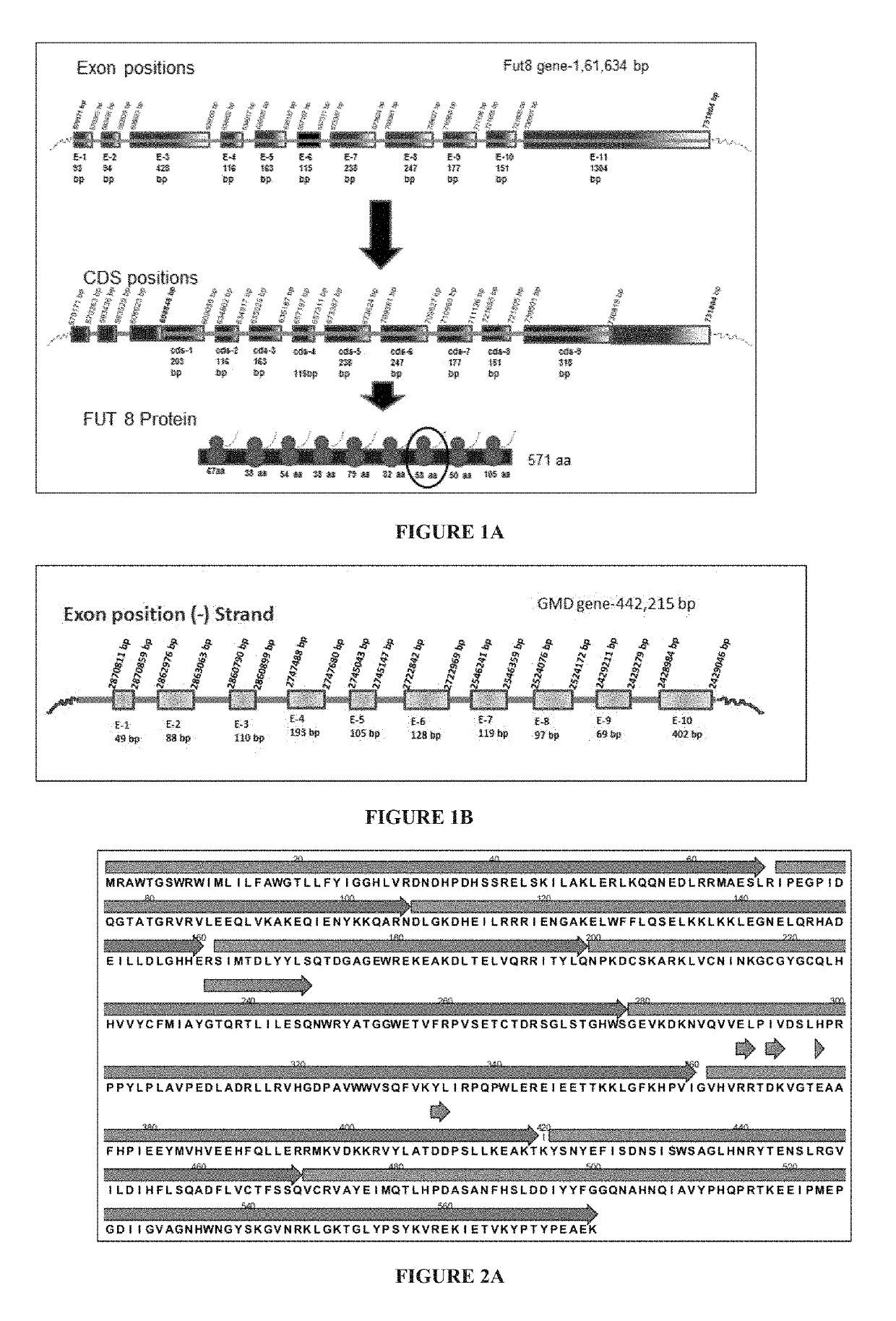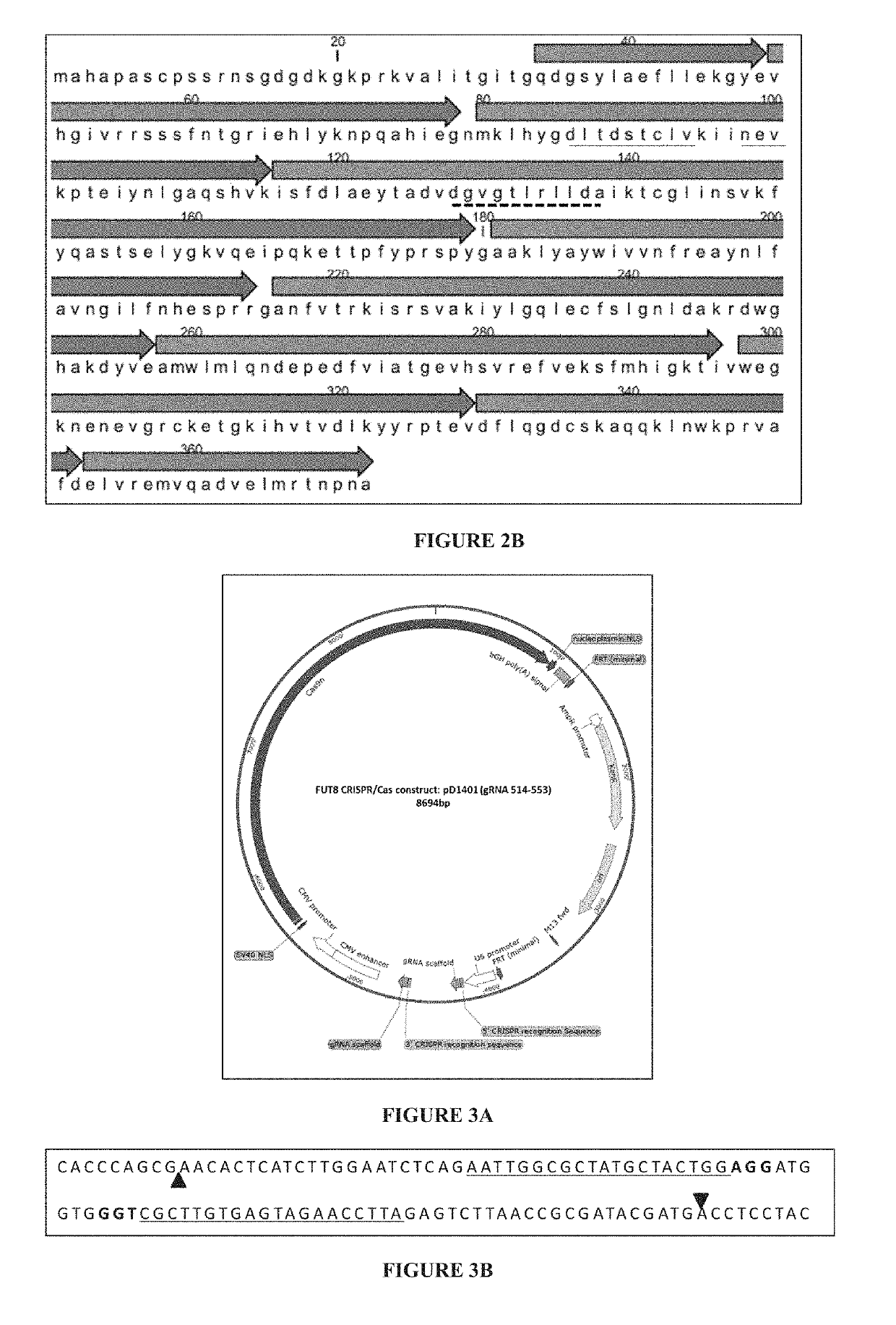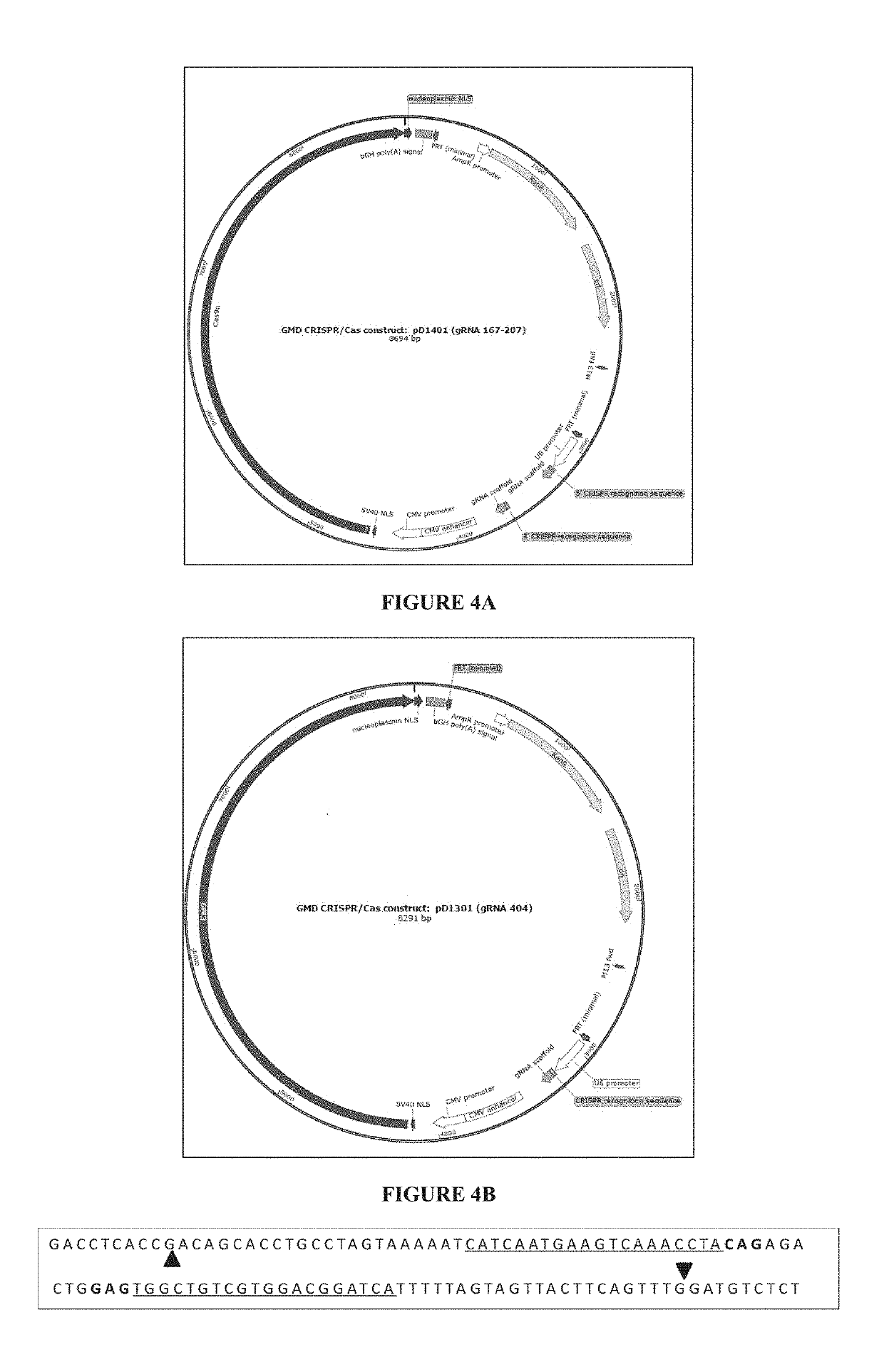Dna-binding domain of crispr system, non-fucosylated and partially fucosylated proteins, and methods thereof
a technology of dna binding domain and crispr system, which is applied in the fields of biotechnology, genetic engineering and immunology, can solve the problems of large screening time, high inefficiency of hr system, and inability to fully eliminate allele variations,
- Summary
- Abstract
- Description
- Claims
- Application Information
AI Technical Summary
Benefits of technology
Problems solved by technology
Method used
Image
Examples
example 1
of CRISPR / Cas Constructs
[0265]The objective of this example is to design CRISPR / Cas complex for specific inactivation of FUT8 and the GMD alleles.
[0266]1.1—CRISPR Constructs
[0267]CRISPR is based on a class of RNA-guided endonucleases known as Cas9 from the microbial adaptive immune system found in Streptococcus pyogenes. Cas9 nuclease is directed to specific sites on the genome by guide RNAs (gRNAs). The Cas9 / gRNA complex binds to a 20 bp target sequence that is followed by a 3 bp protospacer activation motif (PAM) NGG or NAG on the specific gene that needs to be edited (Jinek, 2012; Mali, 2013). Thus, the binding of this whole complex creates double stranded breaks (DSBs).
[0268]A crucial step in targeted genome editing at genomic loci that need to be modified, is the introduction of these DSBs. Once, DSBs are introduced, they are repaired either by non-homologous end joining (NHEJ) or homology directed repair (HDR).
[0269]NHEJ is known for the efficient introduction of insertion / del...
example 2
ion of Cells with Talen Constructs
[0398]This example contains procedure for CHOK1 cell transfection with CRISPR constructs. It also provides for selection and confirmation of single cell stable cell lines for developing FUT8 knock out CHOK1 cell line using CRISPR technology, and selection of positive clones by flow-cytometry based functional assay.
[0399]Transfection Protocol
[0400]Transfection isoptimized using CHOK1 cells of both adherent and suspension type. Liposome and modified liposome mediated transfection reagents are tested for e.g., Lipofectamine 2000, Lipofectamine 3000, Lipofectamine LTX with PlusTM reagent, MIRUS TransIT X2, MIRUS TransIT 2020, MIRUS TransIT 293, MIRUS TransIT CHO transfection kit. DNA concentration ranging from 0.5 pg to 5 pg are tested for various incubation times for e.g., 4 hrs, 24 hrs and 48 hrs. Multiple DNA to transfection reagent ratios (μg:μl) are also tested. The optimum transfection efficiency is achieved using 1:3 DNA to transfection reagent r...
example 3
Binding Assay
[0441]Clonal fucose knock out CHOK1 cell lines are tested in independent repeat experiments using LCA-FITC binding assay:
[0442]Following clonal cell lines are tested for repeatability of LCA-FITC binding assay.
[0443]CR1KOT1#006, CR1KOT1#018, CR1KOT1#022, CR1KOT1#023, CR1KOT1#026, CR1KOT1#031, CR1KOT1#034, CR1KOT1#036, CR1KOT1#037, CR1KOT1#044, CR1KOT1#049, CR1KOT1#051, CR1KOT1#052, CR1KOT1#055, CR1KOT1#059, CR1KOT1#061 and CR1KOT1#067.
[0444]Fluorescein Lens Culinaris Agglutinin (LCA-FITC) stock of 5 mg / ml is diluted to get 2 μg / ml final concentration in assay buffer (DPBS containing 2% BSA). Cells are spun at 1500 rpm for 5 minutes using Eppendorf minispin centrifuge. The media is aspirated and the pellet re-suspended in 0.25-1 ml of assay buffer containing 2 μg / ml LCA-FITC. CHOK1 control cells are re-suspended in 0.25-1 ml of assay buffer alone (unstained control) and 0.25-1 ml of assay buffer containing 2 μg / ml LCA-FITC (stained control). All samples are diluted to ge...
PUM
| Property | Measurement | Unit |
|---|---|---|
| concentration | aaaaa | aaaaa |
| concentration | aaaaa | aaaaa |
| stability | aaaaa | aaaaa |
Abstract
Description
Claims
Application Information
 Login to View More
Login to View More - R&D
- Intellectual Property
- Life Sciences
- Materials
- Tech Scout
- Unparalleled Data Quality
- Higher Quality Content
- 60% Fewer Hallucinations
Browse by: Latest US Patents, China's latest patents, Technical Efficacy Thesaurus, Application Domain, Technology Topic, Popular Technical Reports.
© 2025 PatSnap. All rights reserved.Legal|Privacy policy|Modern Slavery Act Transparency Statement|Sitemap|About US| Contact US: help@patsnap.com



